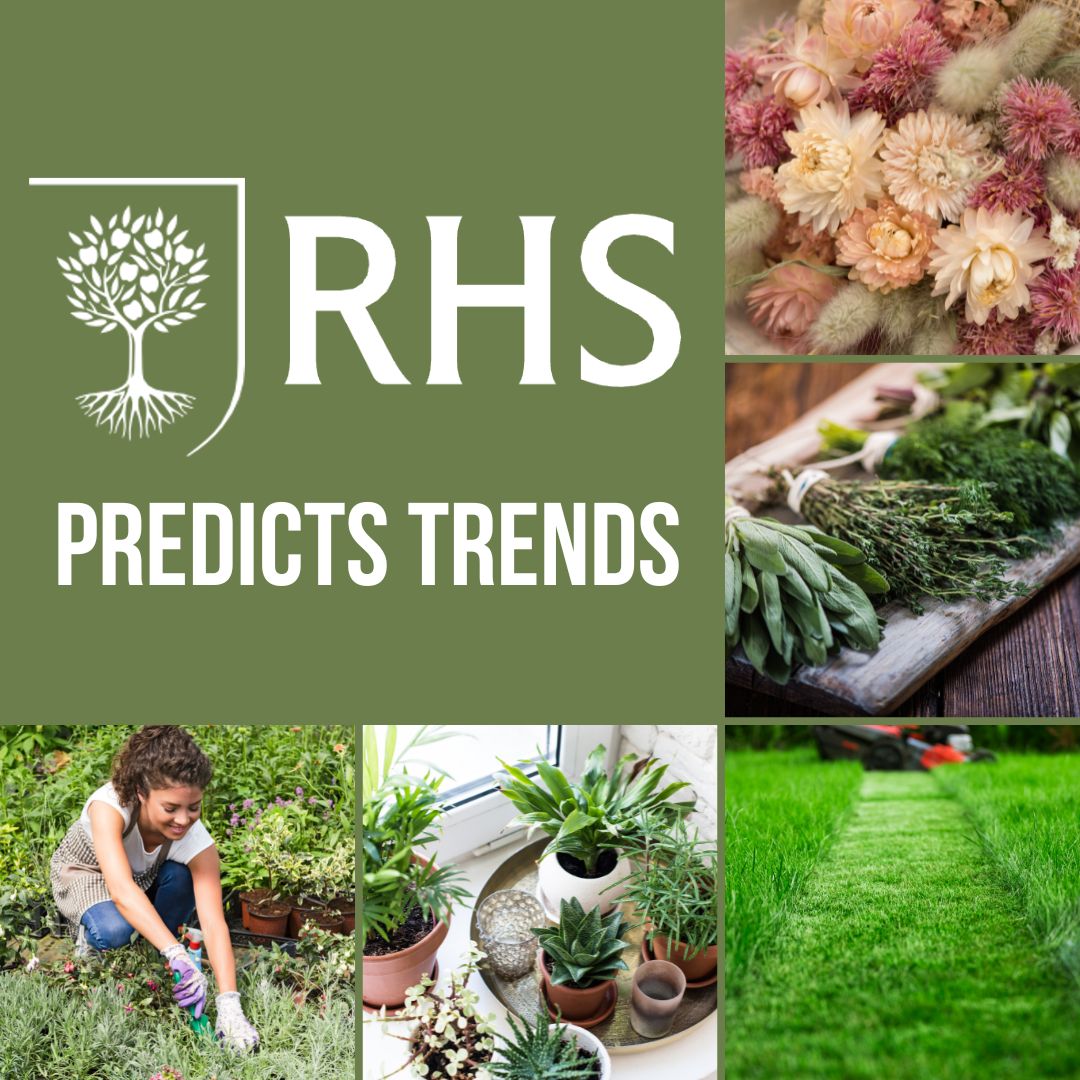
Houseplants, herbs & drieds to flourish
As we enter 2023, the nation’s 30 million gardeners can look forward to flourishing houseplants, bountiful herbs and a multitude of ways to help the environment says the Royal Horticultural Society (RHS), as it publishes its gardening predictions for the year ahead.
And whilst it may not seem particularly florist focussed, the truth is that as more and more shops look for ways to add to their offerings, we reckon there are some serious nuggets of ideas to be jumped on!!
The predictions, based on horticultural trends and gardener enquiries, centre around the move towards Planet Friendly Gardening, with gardeners finding new ways to encourage even more wildlife onto their patch, trying innovative sustainable techniques to improve their soil and be water-wise. Non-traditional lawns, green landscaping and the welcoming back of previously undesirable garden visitors also make the list for 2023.
The RHS’ 2023 Gardening Predictions:
Thriving houseplants: As a warming climate causes us to dial down the central heating, houseplants will flourish. The heat and dry air of centrally heated homes isn’t good for most plants, so more unusual exotics such as Cymbdium and Dendrobium orchids and scented leaf will perform better in a cooler home. This will give houseplant lovers the chance to try new varieties and enjoy the wellbeing benefits.
Regenerative gardening: With peat-based bagged compost set to be banned in the UK in 2024, more gardeners will seek out environmentally friendly wood-based compost alternatives. Seaweed and biochar feeds could be used to complement these alternatives. Comfrey and winter beans can be grown as green manures to help fix nitrogen and other nutrients into the soil and provide habitat and food for wildlife. Comfrey ‘Bocking 14’ can be grown and used directly as a mulch or made into a sustainable liquid feed that supports the growth of newly planted crops.
Gardening goes tech: Apps and social media are becoming even more important as gardeners share what’s happening on their patch, participate in courses and workshops digitally and are prompted into action to plan and plant using apps. This sharing of information online will also give the added benefits of mapping plant health problems and shaping research projects. The RHS will be expanding the range of digital services offered in 2023 to meet demand and to build on the popularity of the RHS The Garden magazine app.
Herb gardens: Herbs are a cheap and easy way for people to add extra flavour to meals, and searches for herbs were up almost 600% this autumn, compared to 2021. The most sought-after varieties were classics such as mint and coriander, with the addition of more unusual varieties including edible flowers and lemon balm. Most herbs are easy to grow from seed, providing another cost saving, and can be sown indoors from March-April and outside from April-August. Many culinary herbs are hardy and perennial and will improve year on year.
Innovative climate-resilient gardens: Following the heat and drought of summer, gardeners will be looking for ways to future-proof their spaces for a more extreme climate. Gravel gardens and xeriscaping (gardens designed to minimise future watering) will be popular, but a changing climate doesn’t have to mean a totally different look for gardens. There are a few swaps gardeners can make to retain the same feel, including fragrant choisya for hydrangeas and phygelius for fuchsia.






